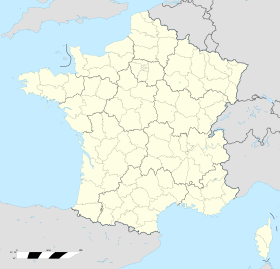Ouvrage Mont des Welches
| Ouvrage Mont des Welches | |
|---|---|
| Part of Maginot Line | |
| Northeast France | |
| Coordinates | 49°19′05″N 6°24′30″E / 49.31806°N 6.40847°E |
| Site information | |
| Controlled by | France |
| Site history | |
| In use | Abandoned |
| Materials | Concrete, steel, deep excavation |
| Battles/wars | Battle of France, Lorraine Campaign |
| Ouvrage Mont des Welches | |
|---|---|
| Type of work: | Large artillery work (Gros ouvrage) |
|
sector └─sub-sector |
Fortified Sector of Boulay └─Hombourg-Budange |
| Work number: | A21 |
| Regiment: | 164th Fortress Infantry Regiment, 153rd Position Artillery Regiment |
| Number of blocks: | 7 |
| Strength: | 490 enlisted + 17 officers (1940) |
Ouvrage Mont des Welches, a gros ouvrage of the Maginot Line fortifications, is part of the Fortified Sector of Boulay. It comprises two entrance blocks, one infantry block, one artillery block, one observation block and two combination blocks. It is located between petit ouvrage Coucou and gros ouvrage Michelsberg, facing Germany. Relatively small for a gros ouvrage, Mont des Welches saw a brief period of sharp action in June 1940, when German forces moving along the rear of the Maginot Line engaged the position without success. After modest renovations in the 1950s, Mont des Welches was abandoned in the 1970s.
Mont des Welches was approved for construction by CORF (Commission d'Organisation des Régions Fortifiées), the Maginot Line's design and construction agency, in June 1930 and became operational by 1935, at a cost of 49 million francs. The contractor was Gianotti of Nice.
The comparatively small gros ouvrage comprises two entrance blocks, one infantry block, one artillery block, one observation block, and two combination blocks. It lacks a central "M1" ammunition magazine, and unlike most gros ouvrages, its 60 cm internal rail network was not electrified, relying on human power to move the rail cars. The underground gallery system is compact, about 200 metres (660 ft) from end to end, and unlike larger ouvrages where the gallery system is linear in concept, the central portion of Mont des Welches is a dense network of cross galleries between to main galleries, housing the barracks and utility areas. The galleries are excavated at an average depth of up to 30 metres (98 ft).
In addition to the connected combat blocks, a series of detached casemates and infantry shelters surround Mont des Welches, including
The manning of the ouvrage in June 1940 comprised 490 men and 17 officers of the 167th Fortress Infantry Regiment and the 151st Position Artillery Regiment, commanded by Chef de Bataillon Tari. The units were under the umbrella of the 42nd Fortress Corps of the 3rd Army, Army Group 2.
The Casernement de Férange provided peacetime above-ground barracks and support services to Michelsberg and other positions in the area.
No attempt was made by the Germans to directly attack this central portion of the Maginot Line, the Germans preferring to go around the west end of the Line and take the Line from the rear. Mont des Welches provided covering fire to other ouvrages in the area through June as the Germans advanced eastwards behind French lines. On 15 June the German 1st Army broke through the Line at the Saar and pushed west and east along the Line, enveloping the French armies. The German 95th Infantry Division under von Amim advanced on Mont des Welches on 21 June, with advance patrols taking fire the same day. An assault using 8.8cm guns was mounted against Blocks 2 and 3, but was disrupted by fire from the entry block's cloches. Artillery fire from blocks 4 and 6 and fire from the personnel entry destroyed a German battery. Hackenberg joined to provide further support. The fort remained under French control until the armistice of 25 June 1940. Mont des Welches's garrison evacuated on 4 July 1940. Mont des Welches was partially appropriated by the Reichspost, serving as a depot for post office equipment.
...
Wikipedia

